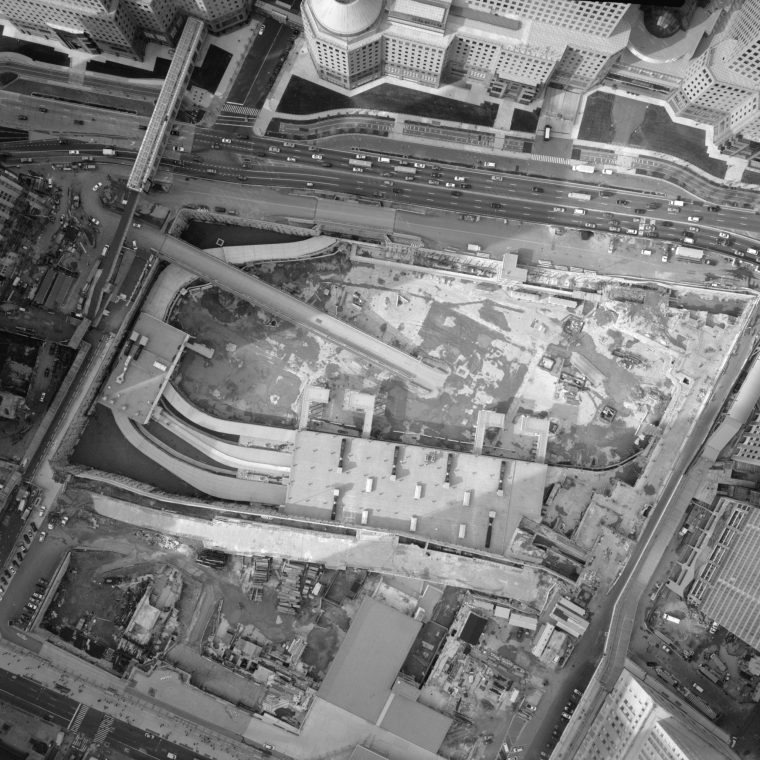There are 14 HABS/HAER surveys with the keyword “skyscraper.” Only one is in New York and it’s not a skyscraper: it’s the World Trade Center site as it existed in 2005, before rebuilding (after 9-11) began in earnest. The picture above gives a sense of the material in the survey: it’s a 2004 helicopter view showing a big open space where the World Trade Center used to be, with the PATH (nee Hudson & Manhattan Railroad) tracks and station in the middle of it. The diagonal line crossing the site (below and immediately adjacent to the PATH station) is the 1 train, with the station there temporarily closed.
Some of there other 13 are reasonably famous: the Price Tower in Oklahoma is as close as Frank Lloyd Wright got to designing a skyscraper (it’s 19 stories tall which, for the mid-1950s, isn’t very tall) and the Pontiac Building in Chicago (one of the buildings in The Structure of Skyscrapers) are good examples. Skyscrapers are included almost as an afterthought for the survey of all of downtown Providence, Rhode Island; they are a focus of the Chicago Cityscape survey. Regardless of your opinion on the (to me, extraordinarily tiresome) Chicago versus New York debate about skyscraper origins, I think it’s not controversial to say that New York has quite a few skyscrapers, many of them famous. So…why no representation?
I think there’s a general tilt in the HABS/HAER world towards older buildings. “Historic American” buildings and engineering both seem faintly ridiculous if generally applied to the twentieth century, as if we were confirming the stereotype of being a nation that knows no history. Keep in mind that HABS began in 1933, before a lot of famous skyscrapers were built, and when many others were new. No one was going to call the two-year-old Empire State Building “historic” when HABS began, and it takes a conscious effort to say that some milestone has been passed that makes it now make sense.
I think there’s also a tilt against commercial structures. Houses and churches are traditional fare for historic surveys; factories fit a certain historical narrative about the rise of the US, particularly if they have a connection to the Great Depression or to World War II. Most skyscrapers carry cultural baggage about money-making and rent-seeking.
Related to the second point, I feel like there’s a segment of the architectural community that still sees skyscrapers as somehow less pure than other building types. I’m a fan of Raymond Hood, who is famous almost exclusively for his work in skyscrapers, and he quite simply gets less recognition (or maybe less respect) than his contemporaries who designed other building types.
Finally, there’s the problem of seeing the trees for the forest. Most cities in the US have their skyscrapers concentrated in a relative compact downtown district. The picture below shows a small portion of midtown Manhattan, around Times Square. You can get so used to the tall buildings all around here that it takes an effort to focus on any one of them.





You must be logged in to post a comment.